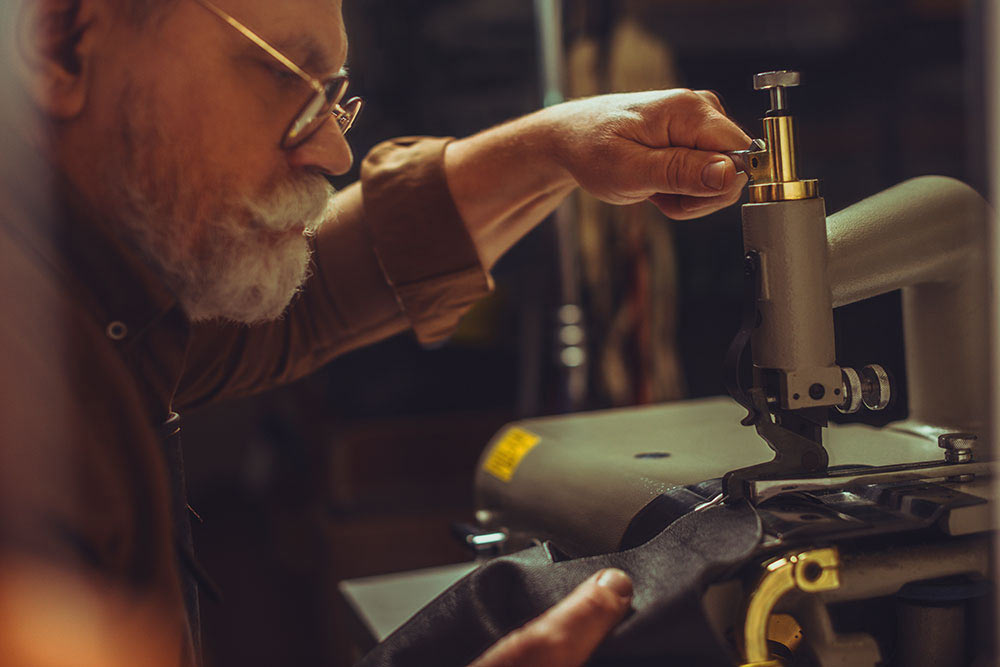
28 Aug How Are Artisans Using Leather in Contemporary Art? Creative Expressions with Traditional Materials
Leather, a material once predominantly associated with traditional crafts, is experiencing a renaissance in the contemporary art world. From intricate carvings to mixed-media masterpieces, modern artisans are pushing the boundaries of what leather can do. This blog delves into how these artists are using leather in innovative ways, creating unique and expressive works of art that blend tradition with modernity.
The Evolution of Leather in Art
Leather has a storied history in art and craftsmanship. Traditionally, it was used for practical items like book bindings, armor, and decorative objects. Over time, its role expanded as artisans began to explore its aesthetic possibilities.
Today, leather is being embraced by contemporary artists who value its versatility and rich texture. The art world has seen a growing trend of incorporating unconventional materials, including leather, into various forms of artistic expression. This shift reflects a broader movement towards blending traditional craftsmanship with modern artistic practices.
Techniques and Methods
Leather Crafting Techniques
Artisans are using a variety of techniques to transform leather into works of art. Sculpting and carving are popular methods, allowing artists to create detailed, three-dimensional forms. Leather mosaics and inlays involve assembling small pieces of leather to form intricate patterns and designs, showcasing the material’s flexibility and visual appeal.
Mixed Media Approaches
Leather is often combined with other materials to enhance its texture and impact. Artists blend leather with metals, fabrics, and wood, creating mixed-media projects that highlight the material’s unique properties. These innovative applications demonstrate leather’s ability to complement and elevate other artistic mediums.
Creative Expressions and Art Forms
Leather isn’t just a material; it’s a canvas. Artists use techniques like painting and dyeing to produce vibrant, unique artworks on leather surfaces. Embossing and stamping add texture and dimension, creating pieces that are both visually and tactilely engaging.
Leather’s durability and aesthetic qualities make it ideal for functional art. Wearable art, including fashion designs and accessories, showcases leather’s versatility and style. Additionally, decorative pieces such as sculptures, wall art, and installations serve as both art and décor, merging functionality with artistic expression.
Notable Contemporary Leather Artists
Several contemporary artists are making waves with their innovative use of leather. Profiles of these artists highlight their unique approaches and contributions to the art world. By examining their featured works, we can gain insight into the creative processes and inspirations behind their art.
Galleries and exhibitions are increasingly showcasing leather art. These venues provide a platform for artists to display their work and for the public to engage with this evolving medium. Information on upcoming exhibitions and notable galleries helps art enthusiasts discover new leather artworks.
The Future of Leather in Art
-
Emerging Trends
Advancements in technology are opening new possibilities for leather in contemporary art. Innovations such as smart textiles and eco-friendly tanning processes are influencing how artists work with leather. These developments suggest exciting future directions for the medium.
-
Opportunities for Artists
The future of leather in art is bright, with many opportunities for exploration and innovation. Artists are encouraged to experiment with leather, discovering its potential as a versatile and expressive medium. This invitation to explore new frontiers fosters creativity and growth within the artistic community.
Conclusion
Leather’s role in contemporary art is expanding, with artisans using it in innovative and unexpected ways. From traditional crafting techniques to mixed-media projects, leather is proving to be a versatile and expressive material. Its aesthetic appeal, durability, and functionality make it a valuable medium in modern art.
Leather continues to impact modern artistic practices, blending tradition with innovation. As artists explore new applications and techniques, leather’s place in the art world will undoubtedly grow. This dynamic evolution highlights the material’s enduring relevance and potential.


